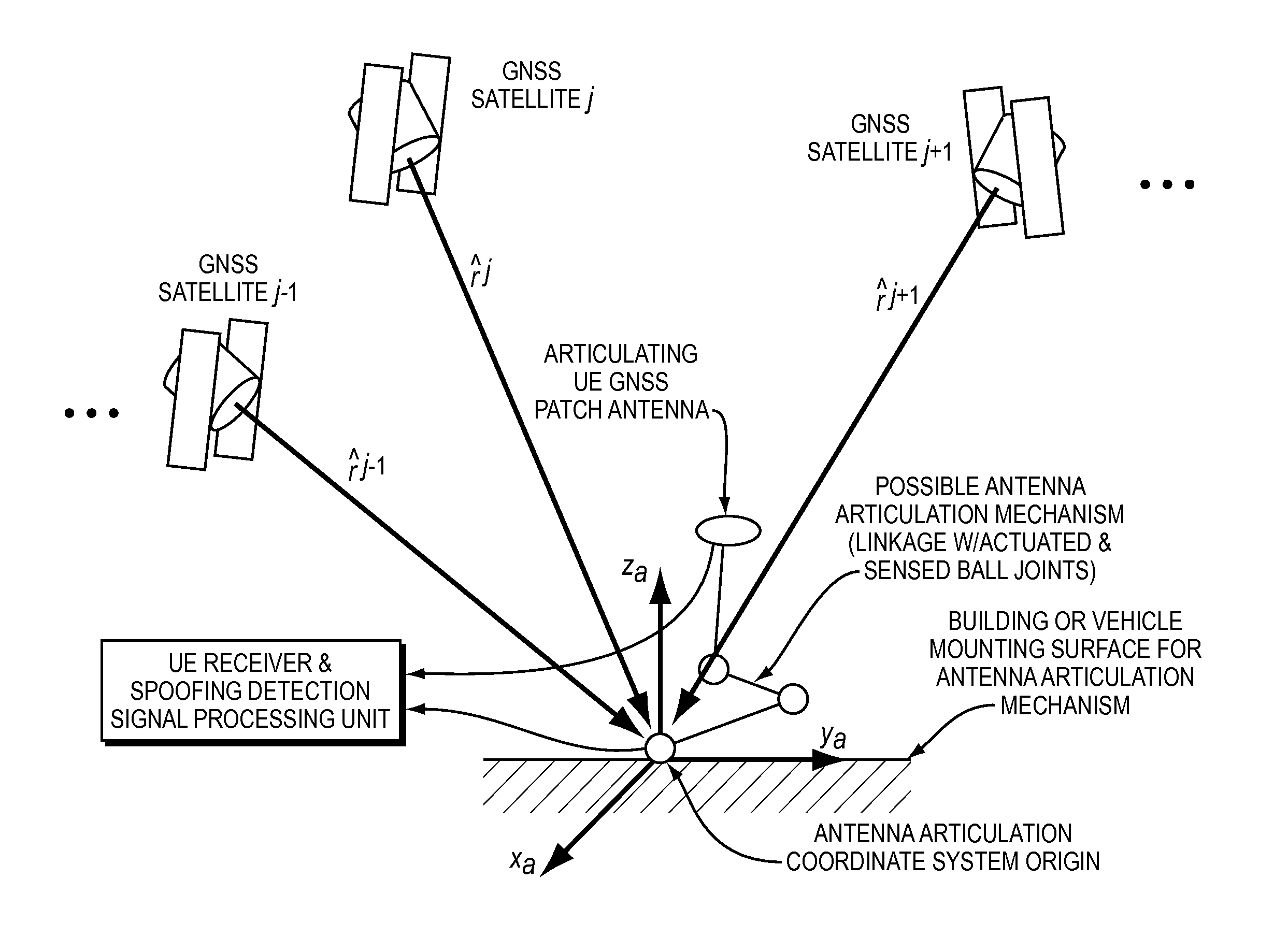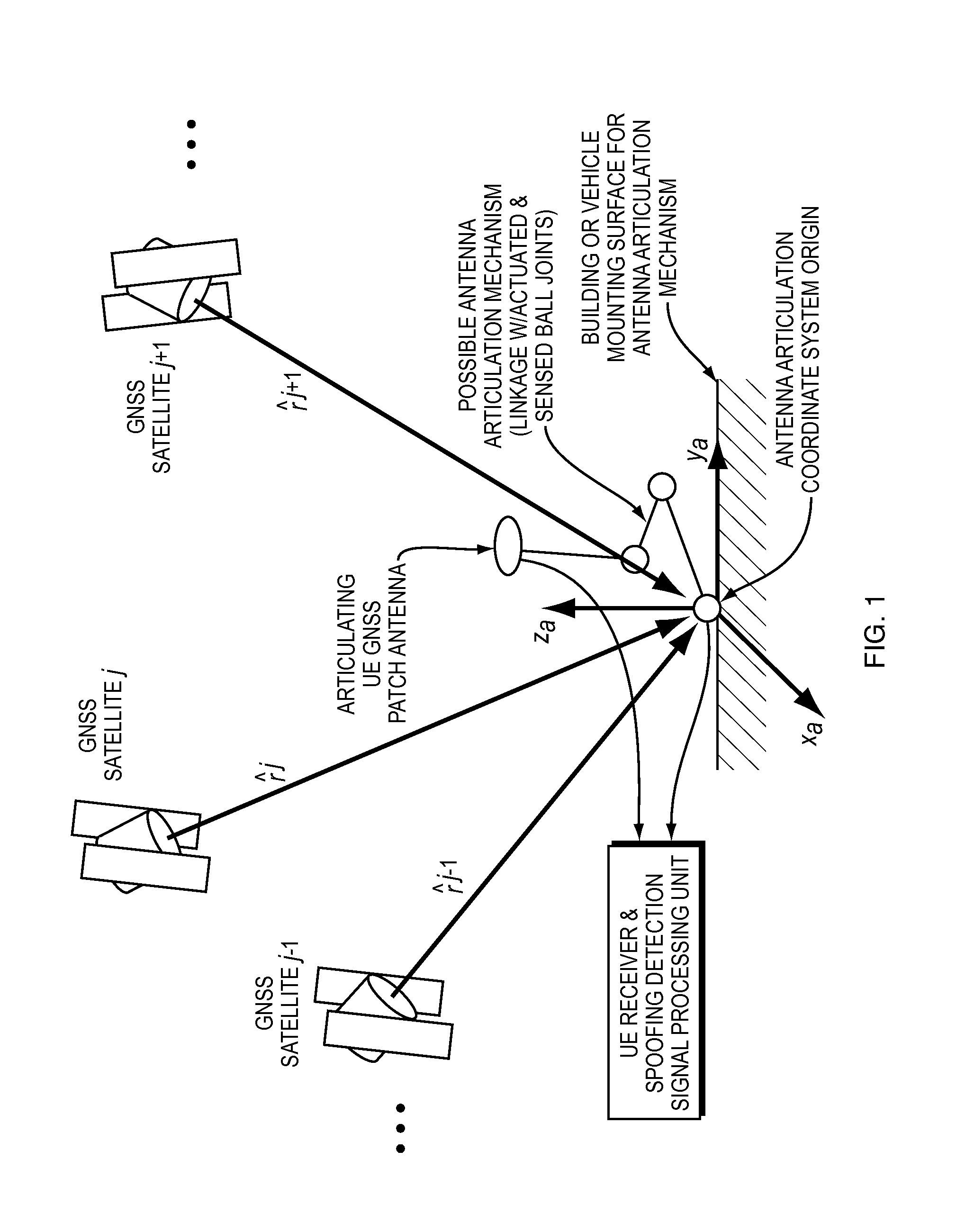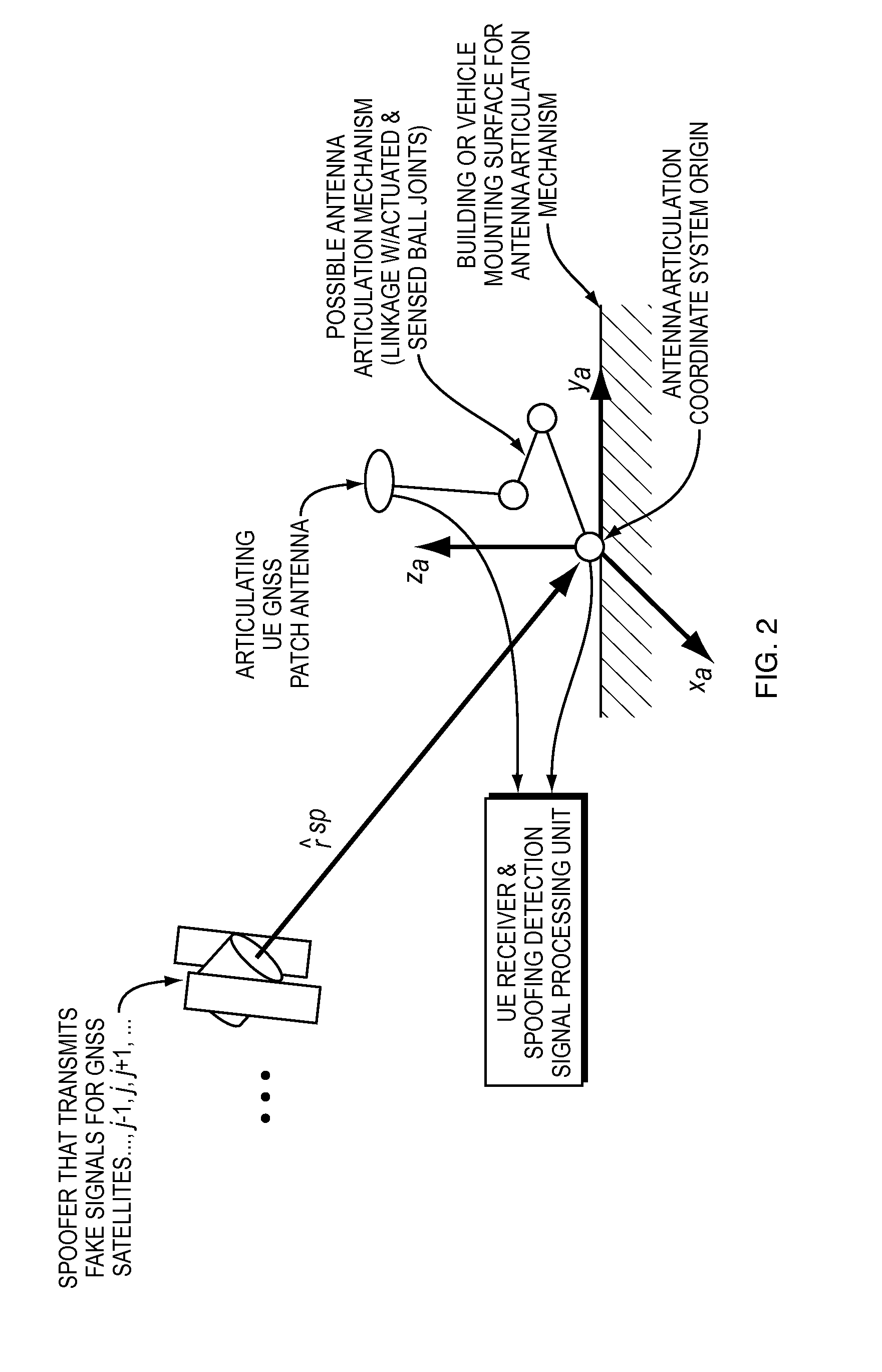These false signals can fool a
receiver into an incorrect determination of its position, receiver
clock time, or both.
Existing anti-spoofing technology known as
Receiver Autonomous Integrity Monitoring (RAIM) will not suffice to detect sophisticated spoofing attacks.
Advanced RAIM methods require only modest changes to receiver
software and hardware, but they may only be able to detect spoofing at the onset of an
attack.
If an advanced RAIM
algorithm misses the attack during this short window, then it may go undetected.
NMA introduces
encryption-level security into the civilian GNSS
community, but it requires changes to GNSS message structures that are difficult to bring about.
NMA techniques may be slow, requiring 10 seconds or more in order to detect an attack.
Multiple-antenna methods can be made reliable and fast if implemented well, but they require a significant amount of additional hardware and
signal processing.
The multi-receiver cross-correlation technique and the NMA technique share an additional drawback: they offer no protection against a meaconing-type receive-and-
replay attack.
Even an encrypted military
signal is vulnerable to a meaconing attack.
The moving antenna technique can be implemented using simple hardware and algorithms, but the method of conventional teachings requires long observation intervals, and it does not develop a clearly defined
hypothesis test.
Furthermore, its reliance on
signal amplitude variations as an indication of spoofing may prove unreliable.
Live data for spoofed cases presents a challenge.
Fortunately, successful implementation of a multi-
transmitter spoofing attack would be very difficult technically, and the needed hardware would be much more costly than the spoofer hardware used in present investigations (see, for example, Humphreys, T. E., Ledvina, B. M., Psiaki, M. L., O'Hanlon, B., and Kintner, P. M., Jr., “Assessing the Spoofing
Threat: Development of a Portable GPS Civilian Spoofer,”Proc.
Much of the difficulty in mounting a multi-
transmitter spoofing attack lies in the need to precisely phase-align the false RF signals from the different transmitters.
In the current application, however, an insufficient PLL bandwidth coupled with a higher bandwidth antenna motion ba(t) can give rise to half- or full-cycle slips that violate this constancy assumption.
In the case of spoofing, however, it is Jnonsp that should be large due to the poor fit of the non-spoofed model in Eq.
In the unspoofed case, however, lack of knowledge of {
circumflex over (r)}a has a significant
impact.
The resulting derivation is straightforward, but somewhat lengthy.
The resulting derivation is lengthy and somewhat tricky.
One difficult part of the derivation relies on the equation:
This is impractical, however, because the mean and standard deviation that define p(γ|{
circumflex over (r)}a,H0) are functions of the unknown true antenna articulation direction {
circumflex over (r)}a.
Otherwise, the iterative numerical solution procedure can take too much computation time or it can even fail to converge to the global minimum.
Although their derivations are long and complex, these calculations involve only matrix-matrix, matrix-vector, and nonlinear optimization calculations for low-dimensional problems.
It also could happen with an antenna mounted on a UAV where the antenna articulations were caused by rapid controller-induced attitude motions and where the
gain of the
transfer function from the control inputs to the antenna motions was uncertain.
Otherwise, the spoofing detection test could be very weak due to having an articulation amplitude that was too small.
The practical effect of this re-definition of η is that it is no longer constrained to lie in the range −1≦η≦1 because of the possibility that a>1. Therefore, the spoofed-case
estimation problem becomes that of finding η to minimize the cost function in Eq.
This type of uncertainty also can occur for an antenna mounted on a UAV if rapid controller-induced attitude maneuvers are used to induce the high-frequency antenna motion.
Any uncertainty of the transfer-function
lag between the control inputs and the attitude response will translate into a time phasing uncertainty.
This approach, however, is not exactly right when working with an uncertain Δt0 and its estimate Δt0opt.
Such an analysis might be rather complicated.
Because this case is considered mostly in support of initial prototype experiments, it has not been deemed worthwhile to do a full analysis of the impacts of Δt0opt, uncertainty.
The general case is more complicated, both in terms of hardware implementation of the articulations and in terms of the spoofing detection calculations and analyses.
Therefore, they do not affect any sensible spoofing detection test either.
Using this parameterization, the attitude
estimation problem becomes
Note: the case of planar articulation presents special challenges to these optimization problems.
Unfortunately, there is no similar method to resolve the {circumflex over (b)}sp
ambiguity.
Note, however, that this may not be the case for a poor combination of ba(t) motion and
gain pattern.
This test will not be an optimal Neyman-Pearson test due to its use of the optimized values A, and {circumflex over (b)}optsp instead of integration over all possible values.
Note that the
optimization problem used to determine Awc will be somewhat more complicated than the corresponding problems for the case of ID antenna articulation motion.
No tests have yet been implement for general 3D antenna articulation.
Unfortunately, these quantities were not known ahead of time.
This indicates that spoofing detection tests conducted using the later oscillations of the prototype
system might not perform exactly as modeled because the nonlinear friction effects become more important, and they are not modeled as well by the decaying sinusoidal
time history in Eq.
In perverse situations, however, the vectors {circumflex over (r)}j may not have sufficient diversity.
Of course, if L=1, if there is only one available signal, then there is no diversity, and this method fails.
Even if L=2 GNSS satellites, however, the one-dimensional version of this
system lacks sufficient diversity.
In fact, poor spoofing detection power will occur in any case where there exists the possibility of finding an {circumflex over (r)}a such that all values of ({circumflex over (r)}j)T{circumflex over (r)}a for j=1, .
A very large GDOP, however, would preclude the spoofer from fooling the victim into confidently computing a false position / time solution.
Even if a spoofer were to
mount such an attack, the present teachings' spoofing detection
algorithm would realize that it was incapable of discerning whether or not an attack was occurring: It would not be able to achieve both a low false-alarm probability and a low probability of missed detection.
It is a well known fact that carrier-phase multipath errors can be on the order of 0.5 cm or more and that they can negatively
impact the closely related technology of GNSS-based
attitude determination No explicit analysis has been made of the
potential impact of multipath on this
system.
The actual rotations of the
antenna gain pattern were small, however, and it is not believable that the resulting
gain fluctuations along any fixed line-of-
sight could have been large enough to cause that oscillations observed in FIG. 11.
Fortunately, this level of multipath error is significantly smaller than the beat
carrier phase variations that were caused by the antenna motion.
Also, there appears to be little or no literature for the IMU-based approaches that discusses how to design a spoofing
detection threshold for a given probability of
false alarm, how to compute the corresponding probability of missed detection, or how much motion and time are needed to achieve reasonably low probabilities of
false alarm and missed detection.
Unfortunately, the beat
carrier phase used is usually that produced by the carrier NCO.
Thus, it is unclear that a tightly coupled GPS / IMU system could be relied on to produce the most useful beat
carrier phase information for purposes of spoofing detection.
The
processing suggested for conventional systems, however, does not envision using an ultra-tightly-coupled GPS / IMU system for spoofing detection.
 Login to View More
Login to View More  Login to View More
Login to View More 


